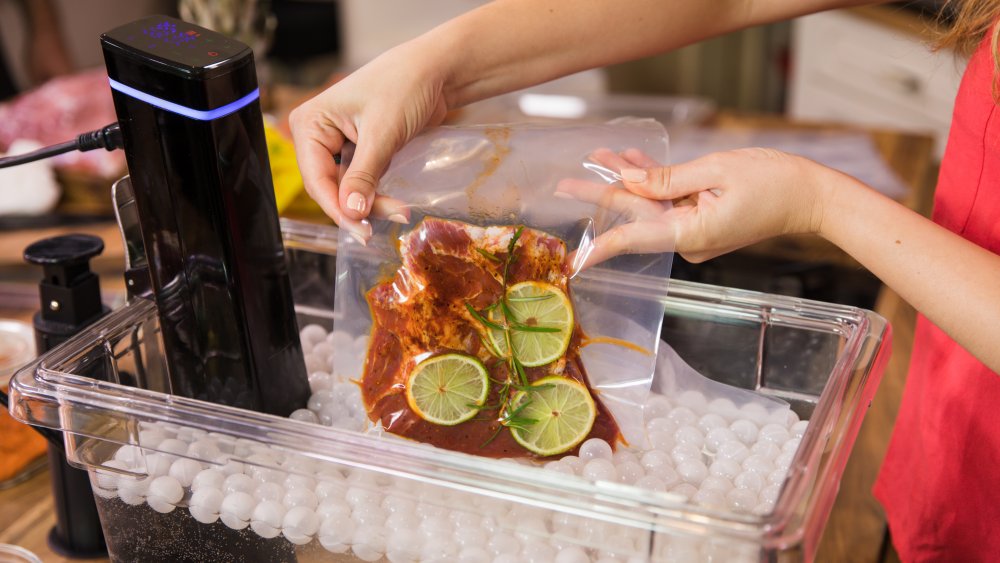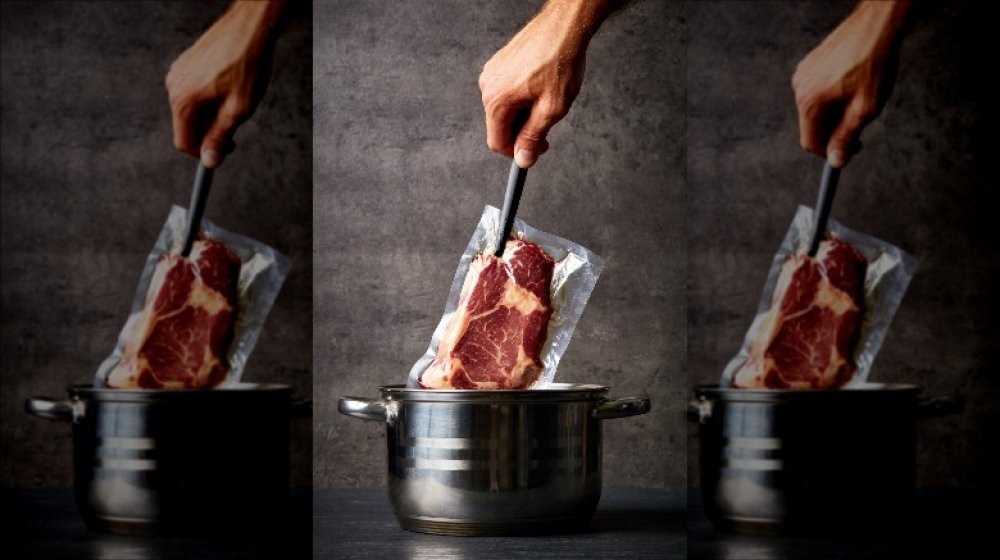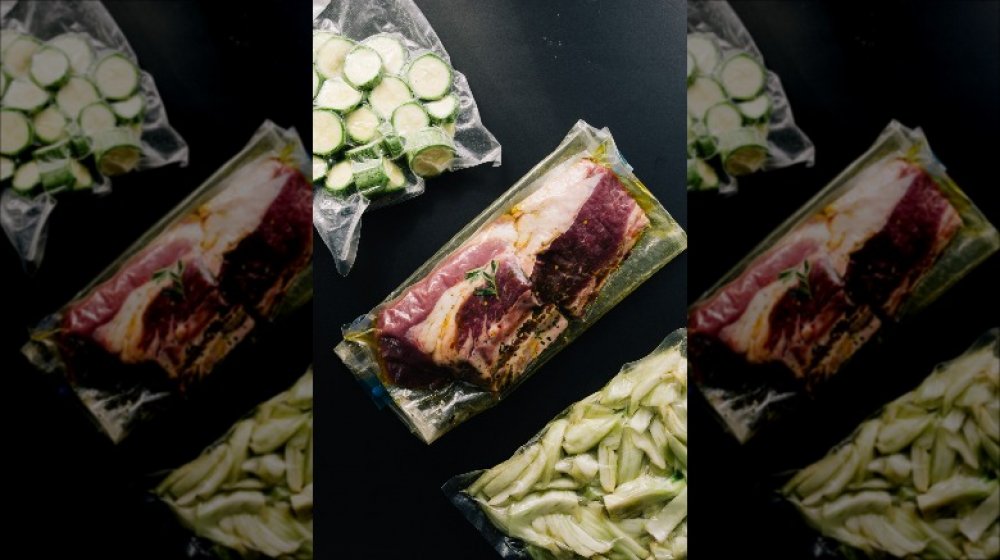The Truth About Sous Vide
Sous vide cooking was, once upon a time, something only practiced by experimental chefs in fancy restaurants, but then sometime in the '00s it went mainstream (via Cook's Illustrated). Next thing you know, sous vide egg bites were available on every Starbucks menu, and everybody and their brother was blabbering on about how they'd just sous vide'd their entire Thanksgiving dinner, pumpkin pie and all.
In case you missed out on the whole sous vide revolution, sous vide is the practice of cooking food by sealing it (tightly!) in plastic bags, then submerging it in temperature-controlled water and leaving it there for an inordinately long time — Bon Appetit reports that a 12-ounce steak takes about two hours to cook via the sous vide method. Kind of like using a slow cooker, only the food itself never comes in contact with the water or the heating element.
Some have derided sous vide cooking as "boil in a bag," but enthusiasts point out that the water used for sous vide cooking is hot, but never boiling, and somehow this transforms things from lowbrow to gourmet.
Is sous vide cooking expensive or dangerous?
While sous vide translates from the French as "under vacuum," Chef Steps points out that it isn't necessary to purchase an expensive vacuum sealer, since in most cases Ziploc bags will work just fine as long as you can get all of the air out. They also suggest that you can experiment with sous vide cooking without investing in a dedicated sous vide machine as long as you have a thermometer and the patience to monitor the water temperature yourself.
Some concerned cooks have expressed fear that sous-vide temperatures won't be sufficient to kill the bacteria that can cause food poisoning, but Cuisine Solutions indicates that the combination of the vacuum seal and the cooking temperature is sufficient to allow for full pasteurization — so, yeah, a lot safer than a gimmicky kitchen hack like cooking fish in the dishwasher. Cuisine Solutions also explains that sous-vide pouches are made from food-safe plastic, and Chef Steps offers the additional reassurance that most Ziploc food storage bags are also free from plastics containing harmful chemicals.
Is sous vide the only cooking technique you'll ever need?
Sous vide is definitely having a moment, and a quick Google search will turn up people claiming to have sous vide'd everything from cocktails to cakes and even pies. Search a little further, though, and you'll turn up an equal number of sous vide disappointments and just plain fails.
Sous vide cooking isn't always perfect, and it isn't for every cook. Digital Trends mentions some of the common pitfalls: sous vide can render meat fat rubbery, punctured pouches can be a big problem, and sous vide cooking is undoubtedly slow... and yes, it is still possible for sous vide food to come out overdone. The sous vide method may not become your go-to food prep technique, but it can be fun to experiment with. Who knows, sous vide may just end up being another tool in your culinary arsenal.


